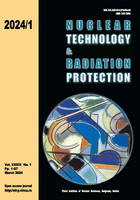
RESEARCH ON ENERGY SPECTRUM ANOMALY DETECTION METHOD FOR STATE CONTROL RADIATION ENVIRONMENTAL MONITORING BASED ON LOF ALGORITHM
Pages: 47-57
Authors: Niu Yunlong, Luo Yunfeia, Cong Feiyun, Zheng Huidi, and Liu XinggaoAbstract
The state-controlled radiation environment automatic monitoring stations are important facilities for monitoring the quality and trends of the radiation environment. However, the analysis and utilization of monitoring data from these stations have limitations. To address this issue, this paper proposes an approach that utilizes the high-dimensional data visualization method based on t-SNE and PCA-BIRCH algorithm's spectrum clustering model to classify historical spectrum data. Subsequently, a local outlier factor-based environmental spectrum abnormal fluctuation detection model is established to enhance discrimination of non-environmental factors causing spectrum anomalies. Results indicate significant differences in spectrum aggregation under different meteorological conditions. The clustering algorithm effectively separates clear and rainy weather spectra based on spectral features, with minimal time consumption and reduced interference from mixed spectrum data. By utilizing local density features, we establish an anomaly detection model, assigning an abnormal score to each spectrum. Comparative analysis demonstrates improved discriminability of the anomaly detection model for unclassified datasets. Our algorithm accurately identifies spectrum fluctuations caused by non-environmental factors amidst complex backgrounds, offering valuable technical support for environmental quality assurance and nuclear emergency decision-making.
Key words: radiation environment, data visualization, PCA-BIRCH algorithm, clustering analysis
FULL PAPER IN PDF FORMAT (1,44 MB)
